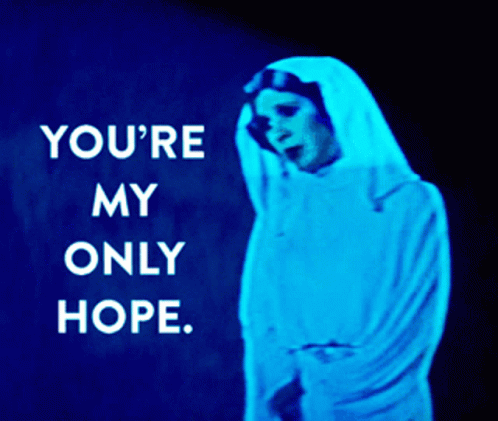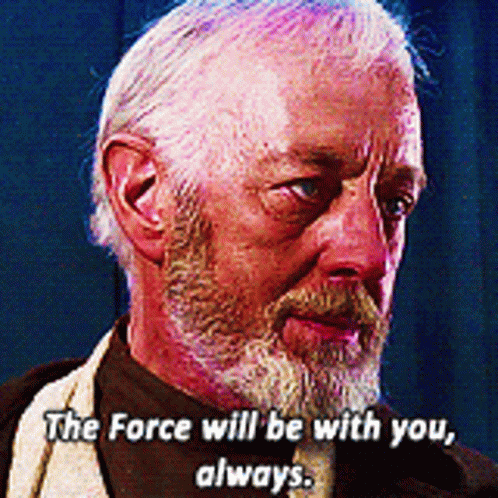How to Tell the Epic Tale of Your API
Even if you’ve never watched Star Wars, you probably know at least 1 character. Star Wars is deeply embedded into global culture.
One lesser-known fact about Star Wars is that the story structure is based on a book by psychologist Joseph Cambell. The book is called The Hero with a Thousand Faces. It outlines a monomyth: the hero’s journey. This story structure can be found across cultures and throughout history.
This universal format resonates deep in our psyche. It can be seen in the success of other major series like Harry Potter and Lord of the Rings. The hero's journey can even be found in parts of the bible.
It is this resonance that creates super fans like Padawans and Jedis (Star Wars fans). Tech startups have been aspiring to create similar superfans for decades. There are even people hired as evangelists. This is a common practice in the world of APIs. An API evangelist is hired to spread the adoption of APIs.
In Part 1 of this blog series, we covered star wars lessons with quotes and characters from the stories. We could have stopped there. Instead, we’re expanding beyond the characters and into the mythology. In this Part 2 of what Star Wars can teach us about APIs, we will show you how to use the hero's journey to connect with your customers as hero’s and help them bring about necessary change with APIs.
It is like a master class on creating API evangelists. If you’re an API product manager, this is a shortcut to the stratosphere of influence. If you’re an API developer, this will put your charisma score on speed dial. If you’re in Developer Relations this will be your map to enterprise transformation.
We’ll start with an overview of the hero’s journey and then map out the 12 steps that make the story arch and show how they relate to your API and customers.

Overview of the Heros journey
The hero’s journey is broken into 12 stages which are grouped into 3 overarching sections.
You don’t have to use all of the steps, you can roll some together. It’s a good challenge to see if you can tell this tale for your API and customers.
Before we begin, you will need to identify who your hero is. This can be applied to API-first products and SAAS which use APIs. Your customers may be internal, external, or a combination of the two. The more specific you are with who your hero is, the better. You can always repeat this thought process for different customers.
The hero’s journey is based on the universal personal journey we undertake when facing a challenge. It covers a variety of internal and external conflicts, and reflects how we see ourselves and the people we come across. It’s the greatest main character energy there is. While there is a clear purpose to the journey, there is also a personal element, which results in an enduring change to the hero.
This is our interpretation of how you can map your customer experience and API to the hero's journey.

Part I: Separation
Ordinary World
Before the adventure starts in In Star Wars, we meet Luke Skywalker living on Tatooine. Before your customer understands your API, you need to understand their ordinary world. Where are you meeting them? Start by becoming familiar with the everyday experience of your customers.
By understanding the mundane details, you can relate to your customer, find a common language and clarify their motivations and capabilities. When you are passionate about your API product this step can feel like a waste of time. Don’t skip over it. It will give you the foundations you need when you start to face challenges later on.
Call to Adventure
Lukes's ordinary world is interrupted by a call to adventure. He receives a message from Princess Leia asking for help.
Identify an opportunity where help is needed. Where things can get better. For example, we wrote about how APIs can save the supply chain. This can be seen as a call to adventure. We share an invitation to automated processes and pricing which save hours of drudgery in your ordinary world. You want to tap into the rebellious spirit we spoke about in Part 1.
This step can feel motivating. It’s probably the reason you love your product and feel inspired. Now you can relate that vision to your customer. Their normal world is no longer the same and they can see that change is needed. For your customer, this change might feel overwhelming and scary.
Refusal of The Call
Luke is reluctant to accept the offer to join Obi-Wan Kenobi in the rebellion. He feels responsible for his work in Tatooine.
This is your opportunity to gain a deeper understanding of your customer's world (and psyche). What is their inner struggle? Some people never get past this step.
The urge to refuse is strong. Be aware of this so you can help your customers overcome their desire to refuse. They most likely have legitimate fears. Bureaucracy, politics, infrastructure challenges, and funding, are real reasons that make people want to give up before they start.
A study by McKinsey showed that 70% of digital transformations fail. A similar number of start-ups fail after 2-5 years. The first hurdle you and your customers will face is accepting to make the change.
Meeting the Mentor
Mentorship can come in many forms. Obi-Wan Kenobi is the original mentor for Luke when he gives him his father's lightsaber and offers to train him.
The purpose of the mentor is to provide guidance on the next step. What tools and knowledge does your customer need?
In our case, a mentor might come in the form of a response on a chat forum. It could look like a how-to guide - like this blog on how to measure the speed, quality, and performance of your API.
The mentor could be you. If you’re in the role of Product Manager or Developer Relations, or even a developer who gets the chance to speak with a customer and guide them through what they’re struggling with. Mentorship will play a continued role throughout the hero's journey.

Part II: Initiation
Crossing the Threshold
Luke has crossed the threshold when he joins Obi-Wan in Alderaan to deliver plans for the Death Star. He has officially stepped onto his journey. He is in unfamiliar territory and the change has begun.
Your customer may be motivated to cross the threshold through the inspiration of a better way of doing things, or fear of being left behind. Either way, your job is to get your customer to commit to the first step. This could be testing out your product or watching a demo.
Another point to keep in mind if you are building an API product is, it doesn’t have to be perfect at this point. You might use this point in your customer's journey to test an MVP. Think of the simplest action they’ll need to take to show commitment to using your API.
Tests, Allies, Enemies
There will be initial tests to overcome. Luke faces his first test and meets allies and enemies when Hans Solo and Chewbacca take him to Alderaan.
Your customer could come across tests in using your product and within their organisation. Change can challenge more than just technical systems. If well-established roles and ways of working are questioned, you will quickly come across allies and enemies.
Your job here is to get feedback from your customer. If possible interview them and watch them use the product. You can also gain deep insights and understanding by observing the API itself.
Go even further by getting to know your customers customers (or stakeholders). Are they working with 2nd or 3rd parties? Do they need different levels of authorisation? These unique scenarios can be seen as tests and you need to help resolve them.
Approach to the Innermost Cave
Spoiler alert, if you haven’t watched Star Wars, from this point on I’ll be revealing major turning points. That’s because the approach to the innermost cave symbolises either a place or a metaphysical challenge. For Luke, this happens with the destruction of Alderaan, the invasion of the Death Star, and the rescue of Princess Leia.
That is a lot for one section of the journey. For your API customer, this might be the point when they decommission an old system or integrate your SAAS service or API into their official ways of working.
It can also represent a big change that you may need to make to bring your new customer on board. There might be changes you need to make to naming conventions or governance.
Ordeal
This is the peak moment for the main character. The cost of the change may come as a physical test or inner crisis. While Leia has been rescued, Darth Vader has killed Lukes's original mentor Obi-Wan Kenobi.
Remember your customers may not experience every step of this journey, it could be a simple, straightforward, and only beneficial change. However, if you are helping with a large and complex change, look out for potential ordeals. Know that these are common steps on the path to success.
For your product, this might be a time to reevaluate your business strategy. You may need to consider new factors like scale or different monetization options.

Part III: Return
Reward
We’re on the home stretch. The hero has defeated the enemy and undergone a personal transformation. This is when Luke decides to join the rebels to defeat the death star.
At this moment your customers join you as evangelists. They have overcome their obstacles and want to share their success with others.
The Road Back
The road back offers a twist to the ending. It also symbolizes that there is no going back to how things were. Here Luke refuses to return with Hans Solo and instead chooses to fight the Galactic Empire.
Your customer may be inspired to take on new and bigger changes. This allows you to establish your API business, embed your strategy, and potentially grow your suite of offers.
Resurrection
This is the final challenge on your customer's hero's journey. It’s Luke's iconic moment when he accesses the force to help him destroy the death star. Luke embodies the Jedi Masters' guidance and his fate is sealed.
It’s hard if not impossible to know what new challenges will appear for your customer, but at this moment they will bring to life the mentorship provided right at the start of the journey.
Return with the Elixir
We made it to the final stage. Luke takes his first step toward becoming a Jedi. This step represents success. It’s the reason so many tech experts refer to themselves as Jedi’s.
With your customer becoming an API Jedi, this is where you are able to stabilize your product and enjoy the rewards.

How to Apply Lessons from the Star Wars Heros Journey to Your API
The primary lesson is to get to know your customers. Understand their world. Firstly get to know their ordinary world. What challenges are they facing? Let those challenges be their call to action.
With APIs, you can observe your customer with incredible precision. Adding the Trebble SDK to your API gives you instant insight into how your product is used. It can make communication infinitely smoother as you share common visibility of the API with your customer.
Gain insights into the use of your API. See the pain points and opportunities for yourself. See how your clients interact with your API. Give them data to make their lives easier to navigate. Help them overcome their own challenges.
We have many customers who are now Treblle evangelists. We helped to solve the pain of observability. You can find out how to install Treblle in minutes here.






